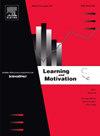Pre-exposure effect in social foraging: A study with groups of pigeons (Columba livia)
IF 1.7
4区 心理学
Q3 PSYCHOLOGY, BIOLOGICAL
引用次数: 0
Abstract
In collective foraging situations, the members of a group use two different kinds of responses to obtain food: producing and/or scrounging. Previous studies indicate that the frequency of use of both responses depends on the conditions to which the members of the group have been previously exposed to, which shows the importance of studying learning factors specifically. The aim of this study was to assess the effect of pre-training under different foraging conditions with the strategies used in collective foraging. Six groups of pigeons were assessed, with three pigeons per group. Three of these groups received a pre-exposure under individual conditions in which they engaged in production responses to have access to food; the other three groups were pre-exposed under collective conditions in which they were able to have access to food by producing or scrounging with a mixed strategy. The groups under both conditions were subsequently assessed during three collective foraging sessions in equal conditions. The assessed indicators were: the producer-scrounger response rate; the percentage of exploited patches and the time between opening of patches; the results showed that the pre-exposed groups under individual conditions used the production response more frequently compared to scrounging. When performing a correlation between the percentage of patches opened and the percentage of individuals that opened one patch at least, a high and positive rate was obtained between both variables. In summary, the findings in this paper show the impact of learning in collective foraging situations.
群居觅食的暴露前效应:以鸽子群为研究对象
在集体觅食的情况下,一个群体的成员使用两种不同的反应来获得食物:生产和/或搜寻。先前的研究表明,这两种反应的使用频率取决于小组成员之前所处的条件,这表明了专门研究学习因素的重要性。本研究的目的是评估不同觅食条件下的预训练与集体觅食策略的效果。对六组鸽子进行了评估,每组三只鸽子。其中三组在个人条件下接受了预暴露,在这种条件下,他们进行了生产反应,以获得食物;另外三组预先暴露在集体条件下,在这种条件下,他们能够通过混合策略生产或搜寻来获得食物。在这两种条件下的各组随后在三个相同条件下的集体觅食过程中进行评估。评估指标为:生产者-拾荒者反应率;被利用补丁的百分比及补丁打开间隔时间;结果表明,在个别条件下,预暴露组使用生产反应的频率高于采食组。在打开补丁的百分比与至少打开一个补丁的个体百分比之间进行相关性分析时,两个变量之间都获得了较高的阳性率。综上所述,本文的研究结果显示了集体觅食情境下学习的影响。
本文章由计算机程序翻译,如有差异,请以英文原文为准。
求助全文
约1分钟内获得全文
求助全文
来源期刊

Learning and Motivation
Multiple-
CiteScore
2.90
自引率
0.00%
发文量
53
期刊介绍:
Learning and Motivation features original experimental research devoted to the analysis of basic phenomena and mechanisms of learning, memory, and motivation. These studies, involving either animal or human subjects, examine behavioral, biological, and evolutionary influences on the learning and motivation processes, and often report on an integrated series of experiments that advance knowledge in this field. Theoretical papers and shorter reports are also considered.
 求助内容:
求助内容: 应助结果提醒方式:
应助结果提醒方式:


